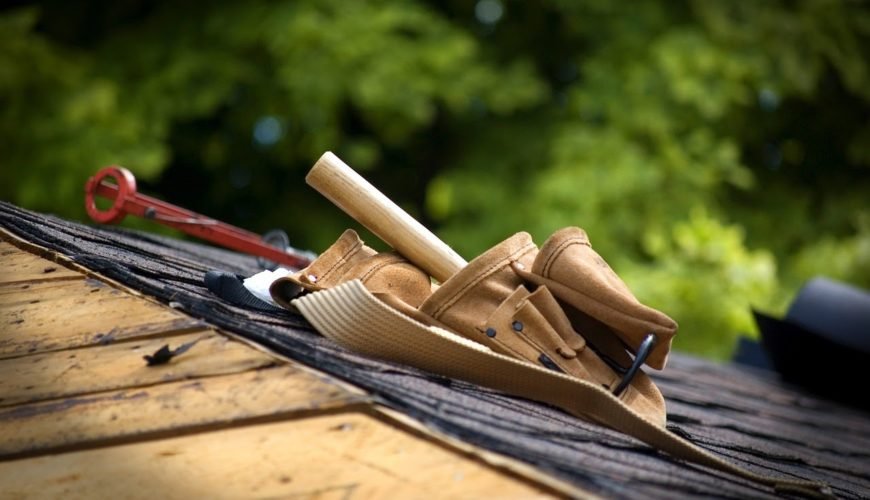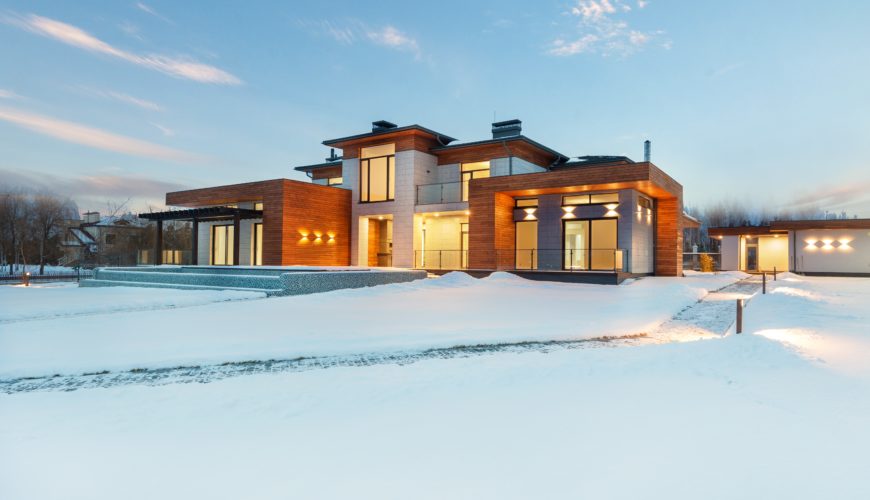The roof as the upper protective structure of the building is exposed to a number of factors, including precipitation, UV radiation, wind, temperature changes, mechanical loads, chemically active substances, etc. Roofing material must meet the climatic characteristics of a particular region, the load on the roof, the type of structure and its architectural solution, the operating conditions of the roof, the technical requirements for water resistance, strength, frost resistance, deformability, heat resistance, water absorption, etc., as well as be sufficiently durable, aesthetic, and environmentally friendly.
Tile is one of the types of roofing materials common in the modern construction market. It successfully combines decoration with functionality. Tiles can be made from different types of raw materials and therefore they can be bituminous, ceramic, composite, metal, polymer-sand, cement-sand, and so on.
What Are GAF Shingles: Characteristics and Composition
GAF shingles are flat sheets-modules of various sizes, shapes, and colors. GAF shingles belong to the class of materials combined with the concept of a soft roof. The most important properties of such roofing, in particular, flexibility, elasticity, water resistance, are provided by the bitumen content.
Typically, GAF shingles consist of six layers, which include:
- The upper decorative layer is formed of mineral, shale crumb, or basalt granulate, which gives the tile color, protects it from precipitation and UV radiation;
- The first bituminous layer, which includes polymeric additives that give the tiles flexibility and resistance to deformation;
- The basis is also capable to provide stability of a tile, consists of a fiberglass or organic cellulose impregnated with bitumen;
- The second layer, which includes bitumen and polymers;
- Bituminous-polymer layer having an adhesive base that provides the possibility of self-adhesive;
- A layer of transparent film, which serves to protect the adhesive layer.
High-quality bitumen is used for the production of GAF shingles, which includes such modifiers as styrene-butadiene-styrene (SBS) and atactic polypropylene (APP), which do not break down over time and are characterized by low fire risk. There are also oxidized bitumens, which are also used for the production of GAF shingles.
Types of GAF Shingles
Types of GAF shingles can differ according to certain criteria:
- According to the number of layers, GAF shingles can be one-, two- and three-layer. Multilayer (laminated) tile is made by gluing two or three shingles in one strip. In this case, the bottom layer is rectangular, and the top layer has special cutouts;
- According to the form of cutting sheets, there are such types of tiles as rhombus, wave, trapezoid, brick, beavertail, dragon’s tooth, rectangular, hexagon, semicircular, corrugated sheet, etc.;
- According to the number of petals, GAF shingles can be three-, four- and five-petalled;
- According to the color, GAF shingles are available in the full range of colors.

What Are the Pros and Cons of GAF Shingles?
A wide variety of colors, textures, shapes, and types of GAF shingles is one of the reasons for its popularity. The second reason for its popularity is its high performance, due to which its service life can reach 50 years and much more. This durability is achieved due to the high resistance of GAF shingles to precipitation and temperature changes.
GAF shingles are supplied in the form of sheets (standard sizes 1 × 0,33 m), packed in packs, the weight of which can be 25-38 kg. Heavier is three-layer GAF shingles with additional bituminous impregnation. The waterproofing properties of GAF shingles are provided by the formation of a solid dense coating, which is sealed even at the joints of the fabric due to the existing layers of binding material.
The sound insulation properties of GAF shingles depend on the thickness of the roofing but in general, they are better than the properties of some other roofing materials, such as metal shingles. Although bitumen is a combustible material, basalt powder protects it from the ignition and the spread of flames.
GAF shingles are used both for laying new roofs and for the reconstruction of roofing on roofs with a slope of 120. It is suitable for roofing private cottages, public buildings, industrial and commercial buildings, especially in cases where the roof has a complex shape.
The advantages of GAF shingles include:
- Rich colors;
- The small weight which does not require strengthening of a rafter design;
- High heat and sound insulation;
- Quietness, low electrical conductivity;
- Ease of processing;
- Possibility of covering of complex curvilinear forms of a roof;
- Ease of installation and repair of the roof;
- Affordable price.
The disadvantages of GAF shingles include:
- The need to build a solid lattice of moisture-resistant wood panels;
- Non-environmental, relative fire hazard;
- Inconveniences that arise during the operation of the roof.
Therefore, the use of GAF shingles is quite profitable today. When choosing it, Legacy Service USA LLC recommends taking into account the compliance of GAF shingles with the type of building, its architectural design, as well as own aesthetic preferences.




